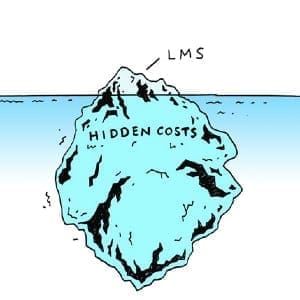 Text and visuals make up the majority of eLearning material in the courses that we’ve come across at eHotelier. It’s common knowledge that combining text with visuals makes your courses better – concepts easier to explain; more engaging for the learners and more interesting for you to create as the writer.
Text and visuals make up the majority of eLearning material in the courses that we’ve come across at eHotelier. It’s common knowledge that combining text with visuals makes your courses better – concepts easier to explain; more engaging for the learners and more interesting for you to create as the writer.
However writing course that are actually good isn’t merely putting text and graphics together without thought. First we’ll go through precisely why you need to mix text and visuals, after that, we’ll take a look at frequent eLearning mistakes that people make and how to avoid them.
Why combining textual content and visuals works
Cognitive psychologist Richard Mayer states that people process text and graphics via different mental ‘channels’. For instance, you would probably remember your first pet if someone gave you its name (verbally), or if they show you a picture of it (visually). In other words, we can retain information in two ways at the same time, us to remember the information later. This is twin coding.
Karl Klauer, another psychologist, ran a study where he gave individuals two tasks at the same time. Half of the participants had to remember phrases and graphics on a display, while the other half of the participants had to remember two phrases or two graphics. The results? Participants that had to remember a phrase and a graphic did much better. This shows the significance of twin coding – individuals can remember text and visuals at the same time, and doing so helps them remember information better.
Everyone knows that adding images increases engagement with learners – it makes content fun and interesting – but the idea of twin coding tells us that images also increase effectiveness.
Combine text and visuals
Richard Mayer goes a step further than simply identifying the importance of combining words and text, however. He also has some recommendations on how to combine words and text. This advice is called the contiguity principle.
Align words to corresponding graphics
What this means is that words and visuals need to be presented together on the page, with as little separation as possible. Let’s look at two different approaches:

Above attempts to point out different regions of the brain. This tile follows the contiguity principle as the image of the brain and its corresponding text are presented together, which means that we can process both the visual and verbal information at the same time.
In contrast, the diagram below violates the contiguity principle:

Because the text is separated from the image of the brain, we’re compelled to look first at the image, and then on the corresponding letter for each brain region. The result is a far more ineffective form of teaching (and learning). This is, without doubt, one of the most typical eLearning mistakes that designers make…
Other Big eLearning mistakes (and how to fix them)
Mistake: Courses often present feedback on quiz questions on a separate page to the questions themselves, forcing the reader to switch back and forth between the question page and feedback page. This limits the effectiveness of feedback.
Instead: Present feedback alongside questions so your participants are able take feedback on board quickly and easily…

Mistake: A mistake designers often make is to fill a page with images and provide one caption underneath (or above) them, describing each one in turn (‘clockwise from top left…’ is a good example of this):

Instead: Try to avoid captioning multiple images at once – instead, split them up and describe each element in turn:

Mistake: As we saw in the brain diagrams, legends should be avoided as they separate text from visuals.
Instead: Try finding, or creating, visuals that directly link words with images.
The contiguity principle doesn’t just apply to text and images – make sure that when you pair narration with graphics, the graphics are presented at the same time as the commentary. Otherwise, your learners are having to piece together your narration and visuals in their head, to the detriment of their actual learning.
Start adhering to the contiguity principle and you’ll be able to dodge the mistakes that most other eLearning designers overlook.
Want to take a look at our learning solutions?
Contact our team to discuss how we could help with learning in your organization.
















